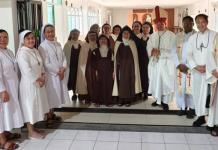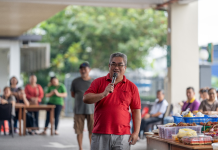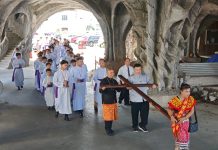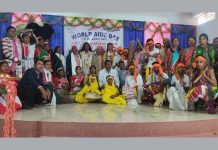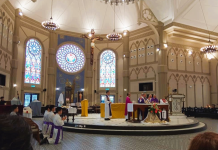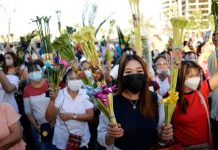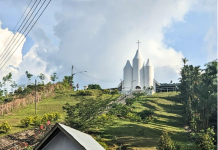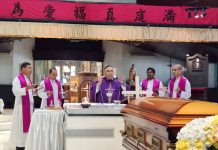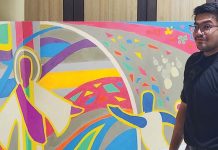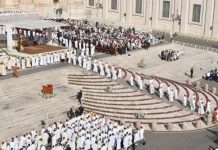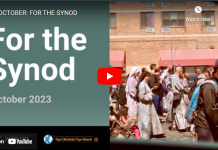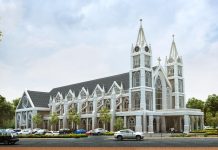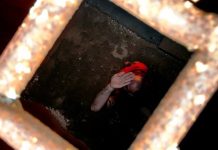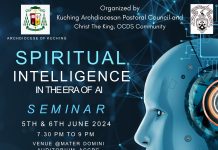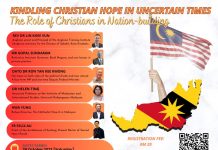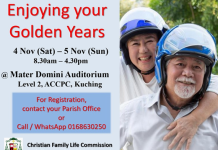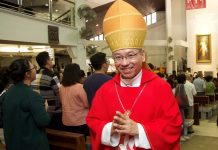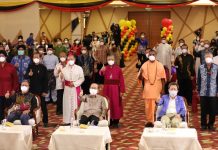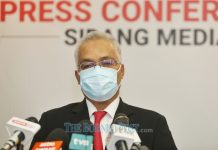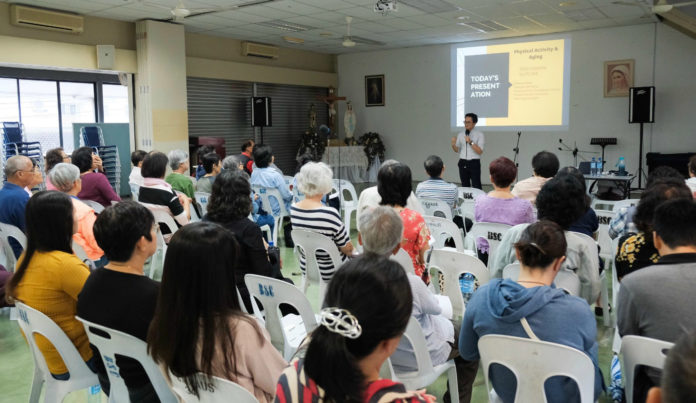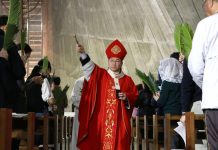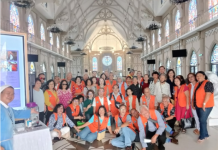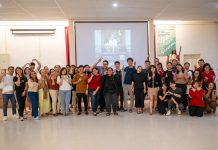KUCHING — On 22 December, an introductory talk on Physical Activity and Aging as well as Stroke Recovery and Rehabilitation was held at the Blessed Sacrament Church Hall, from 2 pm to 4.30 pm. It was well attended by an enthusiastic and attentive audience of parishioners.
The talk was given by two professional physiotherapists, Jeffrey Anak Agnes and Ow Pei Ling. It was graced by the Rector, Fr Felix Au who warmly welcomed all the parishioners and thanked them for their presence.
Jeffrey began the first part of the talk on Physical Activity and Aging by defining what Physiotherapy really is. Physiotherapy is a type of service that “develops, maintains and restores maximum movement and functional ability throughout the lifespan.” Physiotherapy is not just about pain management, exercises, manual therapy or electrical modalities. Physiotherapy is about helping people to be functional with their daily activities through a rehabilitative learning experience.
To begin with, he introduced the audience to two different categories of aging: primary aging, the deterioration of cellular structure and biological function; and secondary aging, the deleterious structural and functional changes caused by diseases and environmental factors. Primary aging is thus inevitable but it is possible to control secondary aging to have a better quality of life.
He also spoke of the various soft tissue changes with aging such as losing bone mass, increased collagenous tissues tightness (ligament, tendon, fascia etc.), reduced maximal heart rate resulting in slow aerobic capacity and more. With the common complaint of pain in older population, he explained that it is impossible to age with the complete absence of pain. Physiotherapy can help us live a better quality of life as it helps us to live with minimal pain while remaining functional.
He also mentioned that our physical activities will reduce as we grow older and we may tend to be sedentary, due to environmental requirements or office-based professions. With references to the latest research articles, active physical activities during earlier age contributed to better motor performance, cognitive function and helped to prevent sarcopenic obesity that might lead to Type 2 diabetes, high blood pressure or high cholesterol in later age.
Jeffrey also discussed the difference between physical activities and exercises. Exercise has to be a planned, structured, repetitive activity aimed to improve fitness with a prescribed and adherent dose. He noticed many elderly people ‘wasting time’ doing ‘exercises’ with irrelevant arm, leg or body movements not targeted to improve any level of physical fitness. It is important for the elderly to do functional movement exercises relevant to maintain our ability to perform daily activities.
With sedentary behaviour defined as prolonged sitting time, Jeffrey asked the audience to observe their daily behaviour for a week by keeping a record of their sitting time. He advised taking short breaks e.g. walk, stand or do physical activity for a few minutes before returning to the chair. They should also include 150 minutes of moderate to vigorous exercises such as brisk walking, running, gardening or swimming per week, in addition to daily physical activities. Structured functional exercises will prevent the effects of sarcopenic obesity and other structural or functional changes with aging.
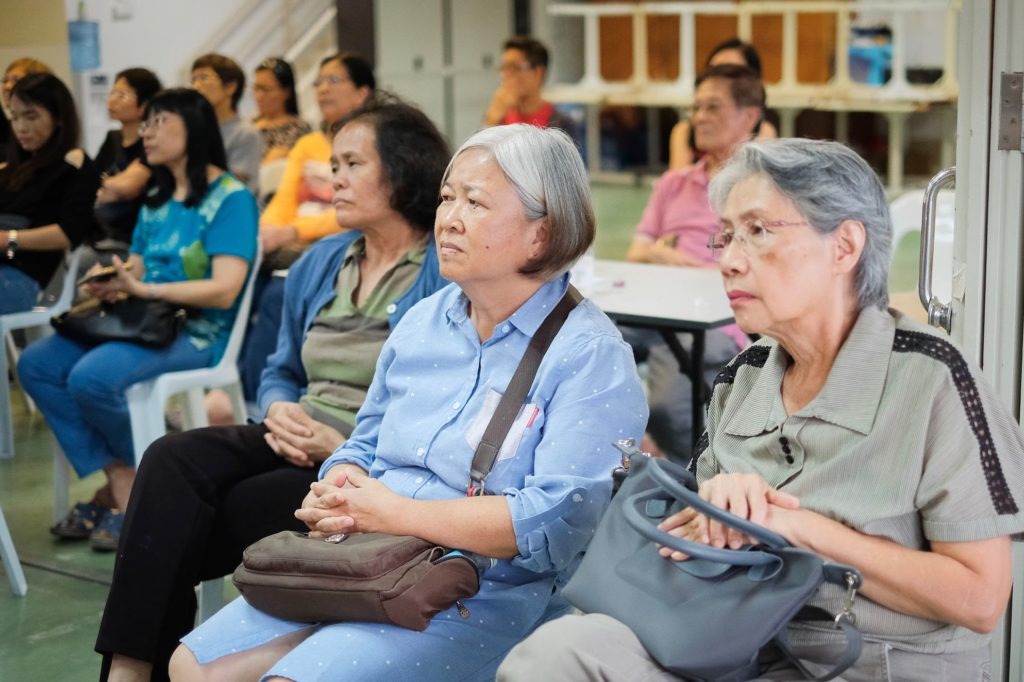
Ow Pei Ling’s presentation was on Stroke. According to her, stroke is a sudden loss of neurological functions caused by interruption of blood flow to the brain. Every stroke survivor can be different since the brain is a very complicated structure which is responsible for all of the sensory and motor functions of the human body, but the typical appearance of stroke includes facial drooping, one side of arm and leg weakness, difficulty in balancing and walking, and changes in speech or slurred speech.
Research has shown that stroke is the third leading cause of death with high prevalence of adults affected by stroke in Malaysia. Hence, it is important for the public to know more about stroke and how to prevent it.
Stroke can be caused by blockage from blood clot or fatty plaque (ischemic stroke), or rupture of blood vessels (haemorrhagic stroke). She introduced the audience to Transient Ischemic Attack (TIA) which is well known as “mini stroke”, also another main sub-type of stroke.
It is usually overlooked by the public as none of the neurological dysfunctions will remain after the incident. She advised seeking medical assistance as studies have found that people with TIA have high chances of getting a full blown stroke in the near future after the TIA onset.
Ow further explored the risk factors of stroke which include hypertension, diabetes mellitus, high cholesterol, heart disease, atrial fibrillation, unhealthy diet, smoking and obesity. Women have a higher tendency to get stroke during early menopause, pregnancy, during delivery and the first six months after pregnancy due to regulation of estrogen.
However, she stressed that stroke can be prevented by monitoring blood pressure, controlling cholesterol, reducing blood sugar level, eating healthy, engaging in at least moderate intensity of physical activities, losing body weight if needed, quitting cigarette smoking, consulting a doctor on usage of aspirin and other medications, and having regular health screening.
She emphasised that time is everything for stroke. It is very crucial to act “FAST” to call 999 for help when any of the typical signs of stroke (Facial drooping, Arm weakness, Speech problem, Time to call 999) is identified. It is important to address post stroke depression in stroke survivors or their caregivers, and engage stroke survivors in stroke rehab to regain their physical function as soon as possible because six months after stroke onset is so called the “golden period of recovery” in stroke recovery.
Ow showed some proven studies on the advantages of rehabilitation on functional recovery in stroke cases. She also shared that walking is a very important milestone to achieve for stroke survivors because it can boost their confidence level significantly.
Ow advised parishioners to live a healthy lifestyle and to be more aware of their health as aging is part of living but stroke is not.
The Q & A session after each talk was fun and informative, and in appreciation, the audience gave a big applause to the presenters Jeffrey Anak Agnes and Ow Pei Ling at the end of the day.
Joseph Wong / Jeffrey Anak Agnes

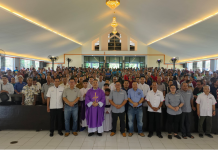
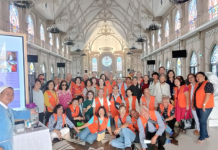
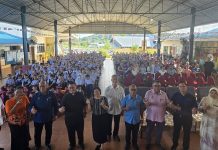
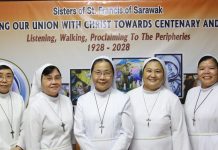
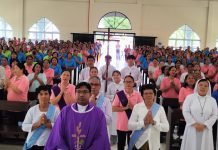
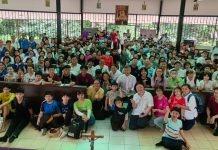

、尤金·玛格拉桑神父(Fr-Eugene-Maglasang)(前排右八)及叶祥胜神父(前排右十)于2025年1月25日在圣体堂合影。(摄影:蔡彼得).jpg)
